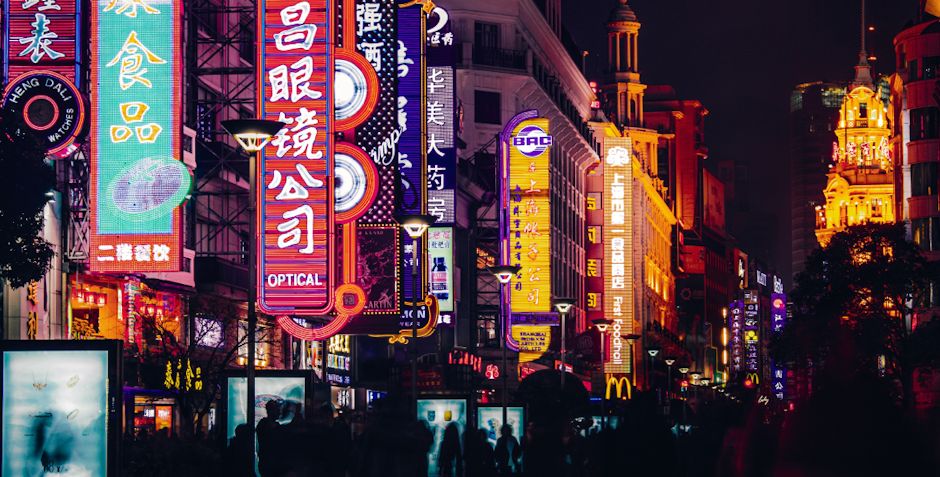What the UK can learn from China's merge of offline and online retail
Successful retailers are blurring the boundaries between the online and offline worlds to create the new retail

New retail is an integrated retail delivery model where offline, online, logistics, and data converge to enhance customer experience. The pandemic has amplified the role of new retail in optimal experience delivery and China is taking lead in executing this, while many UK brands have just started to prioritize digitalization.
Here I look at why it would be hugely beneficial for UK brands to understand this, and the discrepancy in approach with their counterparts in China.
What is new retail?
The future of retail will not be a matter of platform, but of experience. That’s the idea behind the new retail strategy, which integrates the offline and online touchpoints along the customer journey to deliver a seamless cross-channel retail experience.
The ability to reduce boundaries between the online and offline world will be a critical success factor in the post-Covid era. New consumer trends have emerged as a result of the pandemic; a large proportion of people have started using online platforms for the first time and will continue to do so.
The immediacy, ease, and speed that digital commerce offers have made it near ubiquitous, and 63% of shopping journeys now start online. At the same time, 46% of consumers still prefer to shop in person and believe the store experience will never be matched by the internet. The new retail approach is a way for marketers to meet these contradictory demands and help brands succeed in both online and offline worlds.
New retail in the UK
Due to lockdown restrictions, many brands in the UK have invested in new ways to merchandise their products online. Ted Baker hosted live video shopping events on Bambuser where users could send likes, comments and ask questions about products and services in real-time. Elsewhere, augmented reality (AR) has been adopted to replicate offline experiences (such as in-store browsing) using online tech. IKEA, for example, launched an AR tool that allows consumers to see how the items they have selected fit into real-life surroundings.
As well as bringing offline shopping elements into online platforms, brands are starting to incorporate the immediacy and convenience of online shopping into in-store experiences. Amazon Fresh, the one-stop grocery store that opened in West London in 2021, is a good example of this transition. Shoppers no longer need to queue to pay and are instead charged automatically via the app, as in-store sensors and cameras track the items customers pick up and add them into virtual carts.
These measures focus on developing a borderless channel between two realms. Brands are either digitalizing physical elements or physicalizing digital ones. However, the goal of new retail is to create a seamless experience where offline and online coexist and co-develop along the journey. This is where China is taking the lead.
New retail in China
Brands in China have more experience with blending physical and digital elements throughout the consumer journey. This advanced position in new retail is because of the country’s more mature digital landscape, and more demanding consumer needs. Before the pandemic, China already had a deep digital consumer base, with worldwide leadership in major digital metrics including the number of internet users, mobile payments penetration, and retail e-commerce spend. These digital consumers are increasingly combining retail store shopping experiences with their online purchase decisions.
This tendency pressures brands to start integrating the benefits of the two worlds in a more effective manner. For example, Burberry launched its social retail store in Shenzhen where consumers can interact with the brand and immerse themselves in the products in person and on smartphones. Through a lightweight programme within WeChat, consumers explore the store via features such as store tours and learn about products. Each interaction rewards consumers with social currency which can be redeemed for exclusive café menu items and outfits for their animal characters received in the programme. The brand builds a circular ecosystem where online and offline complement each other.
Following Burberry’s move, L’Oréal opened its concept store in Shanghai. Consumers can take a virtual bike tour around Paris while collecting discount points along the journey. They can also explore product recommendations generated from their skin analysis report. These behaviors are linked to consumers’ WeChat accounts via L’Oréal’s mini programme. The recommended products are added to the shopping basket linked to their account. In this way, the brand continues providing personalized content based on their in-store interactions after leaving the store.
What's the future for new retail?
Both of these Chinese examples reveal that the future of new retail is developing virtuous cycles where online and offline feed into each other. The pandemic has accelerated the UK’s digital progression and demands for new retail have emerged – both of which were already happening in China before the pandemic. Many UK brands have started to invest in adding physical elements to online and digital benefits to stores. Compared to progress being made in China, these actions are merely the foundation of the new retail revolution. To stand out in the new era, UK brands need to move forward towards the next stage.
This integrated process is particularly useful in the cookieless future, which requires abundant primary consumer data. In-store digitalization enables data collection around every interaction, and more online engagement with consumers, which in turn generates more data. Brands will be able to identify actual consumer needs from their own data pools without tracking cookies.
However, the precursor for this evolution is to place consumer experience in the center of strategy development and to stop thinking in terms of online vs. offline. Only with this mindset will it be possible to deliver the experiences consumers want in an integrated way.

